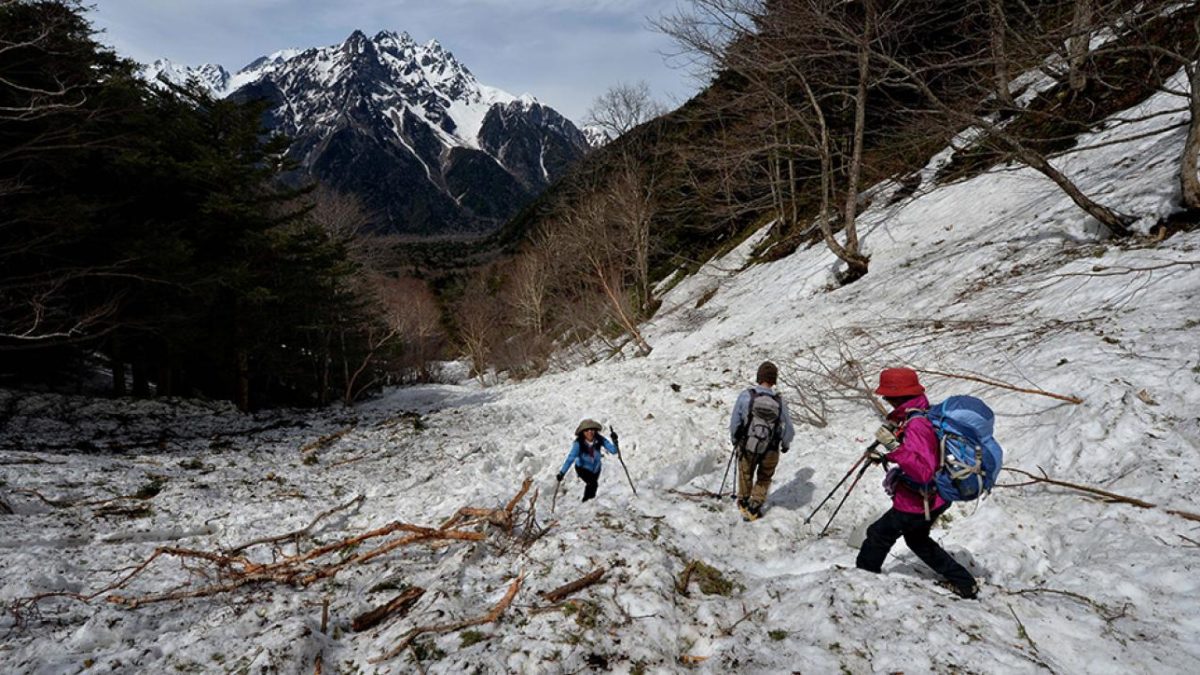Avalanche Awareness for Rock Climbers and Hikers
Avalanches can happen in spring and summer, here are myths and tips for your next adventure

If you plan on spending time in the backcountry during the snowy months, take an avalanche safety course. It’s easy to forget that avalanche safety applies to hikers and rock climbers in the spring as much as it does to skiers.
As the days get longer and the temperatures rise, non-avalanche beacon carrying climbers and hikers head to the hills in droves. Maybe you’re climbing a mountain, maybe you’re hiking a ridge, maybe you’re approaching a crag, or maybe you’re just out in the valley bottom for a mid-day trail run.
No matter what you’re doing in the mountains in spring, avalanches have to be on your mind. Every March, April and May, we hear about hikers buried in avalanches and rock climbers who head up to high-mountain crags and encounter avalanche debris on trails.
The avalanche deaths in the U.S.A. from 1960 to 2016: 54 hikers, 182 climbers (technical or semi-technical mountaineers), 249 snowmobilers, 260 ski tourers. There are many ways to find a safe route when you’re travelling in avalanche country and there are many myths, too. Here are a few of them.
Tip: Let it Settle
Don’t hike right after a storm. Most avalanches occur during or just after a heavy snowfall, when added weight and weak bonds between fresh and existing snow make slides more likely. Always check the avalanche forecast for your local reports.
Myth: Avoiding Slopes Means Safety
It’s true that avalanches occur on slopes, but that’s just where they start. They often end up in the valley flats and the trees below. Even being below a slope can trigger an avalanche. Assume all snowpack is connected, and your weight can have an effect on snow at great distances.
Tip: Watch the Trees
Travel well back from the base of steep, snow-loaded slopes. Dense forest (meaning you can extend your arms and touch trees on both sides) is a good sign that you’re beyond the run-out zone. Mature trees have deep roots. Avoid barren gullies and slopes with sparse stands of young timber. Trees with broken branches on their uphill sides are also signs that avalanches routinely sweep vegetation from the hill.
Myth: Being Above the Slope is Safer
If you’re above the avalanche then you’re safe, right? Nope. Just last year in B.C., five hikers died when a cornice broke away on Mount Harvey. Cornices are large wind-made features of snow that hang from ridges and mountain tops. The wave-shaped drifts form on the lee sides of ridges and can break under your weight. Stay away.

Tip: Hike the Ridgeline
Hike on the windward side of gradually sloping ridges where snow is usually thinner and less likely to slide. Once again, stay well away from cornices. Hike as far away from the cornice’s edge as the ridge allows.
Myth: Moderate Avalanche Forecast Means No Worries
A favourable forecast can provide a false sense of security. A number of avalanche fatalities occur during moderate forecasts, probably because more people are out in the backcountry. Believe it or not, but fatalities can and do occur when the forecasted danger is low.
Tip: Stay Alert
Constantly observe the changing snow and terrain around you. Be on the look-out for signs of recent avalanche activity, cracking or “whumping,” snowballs rolling spontaneously down the slope (called pinwheels), slush that’s deeper than the tops of your boots, any dramatic weather change (rainfall, rapid warming),
Assess a slope’s angle before travelling across or below it. Consider the slope’s curve, for example concave curves tend to be more stable than convex ones because the snow lower on the hill often supports the snow above.
Myth: Avalanches Aren’t Bad in Spring and Summer
In Canada, avalanche deaths have occurred in every month of the year. Mid-winter in the most dangerous. Throughout the year, be alert for loose wet avalanches. Even in summer, a large slope can deteriorate enough to lose cohesion and slide. A loose wet avalanche can knock you off your feet, push you off a cliff or bury you in a gully or tree well and bury you.
Tip: Choose Like-minded Partners
Travel with people who are avalanche aware and have a similar risk tolerance. Discuss the risks and make a plan before departure. Check in with each other often as you travel. If you’re heading to a crag and the fastest approach is up an avalanche gully, but you want to take the long trail through the trees and your partner wants to do the gully. Things can go bad. Follow your gut and keep good communication going.
Myth: Rock Climbers Don’t Need to Worry
Many of Canada’s best rock climbing areas are found in the mountains, either valley bottom or high on a steep cliff. And if you’re heading up to a multi-pitch early season, you’ll likely be crossing avalanche paths that can still slide late into the spring. No one is immune from avalanches, even if you’ve taken a course, always have avalanche safety on your mind.


